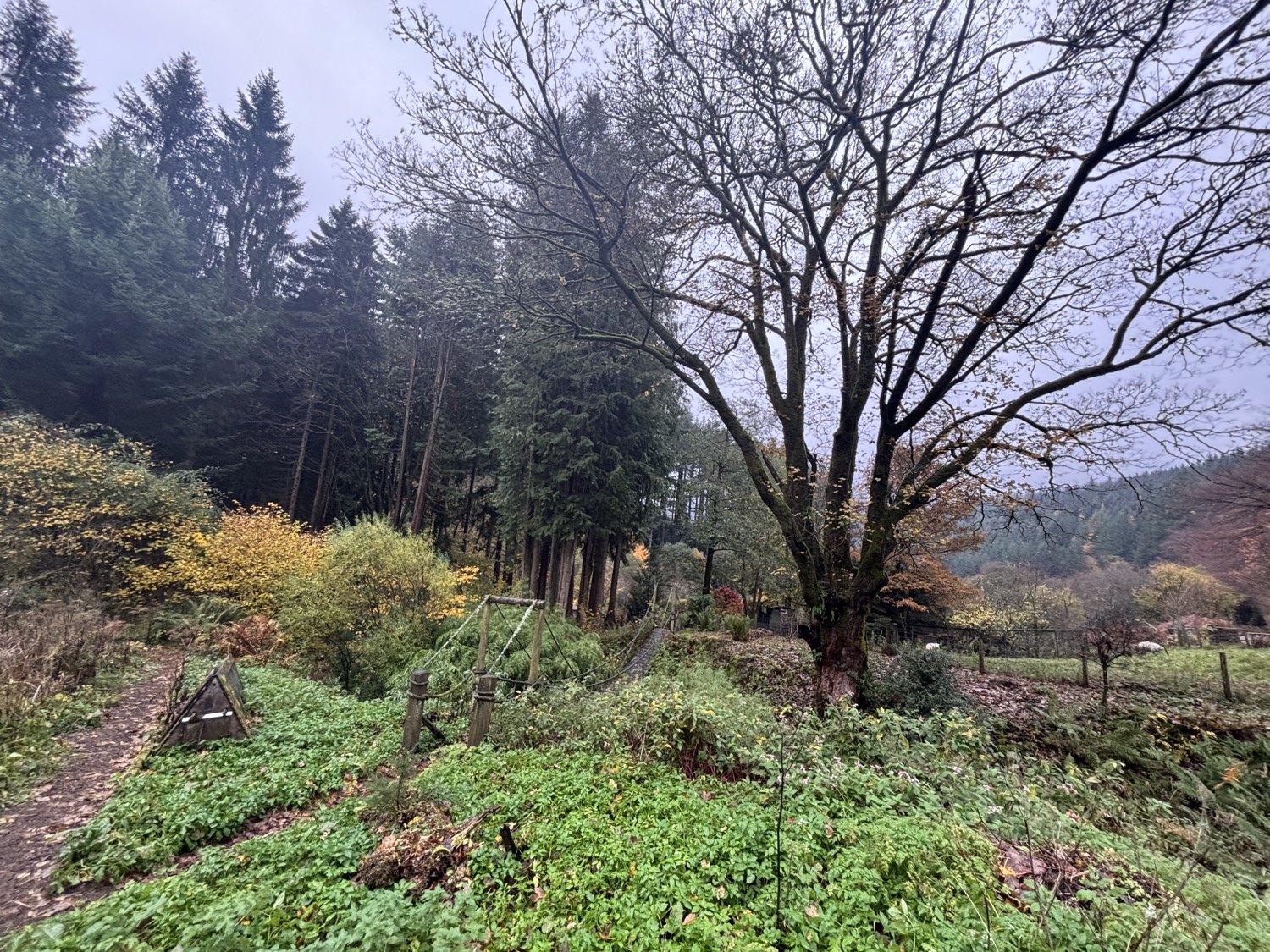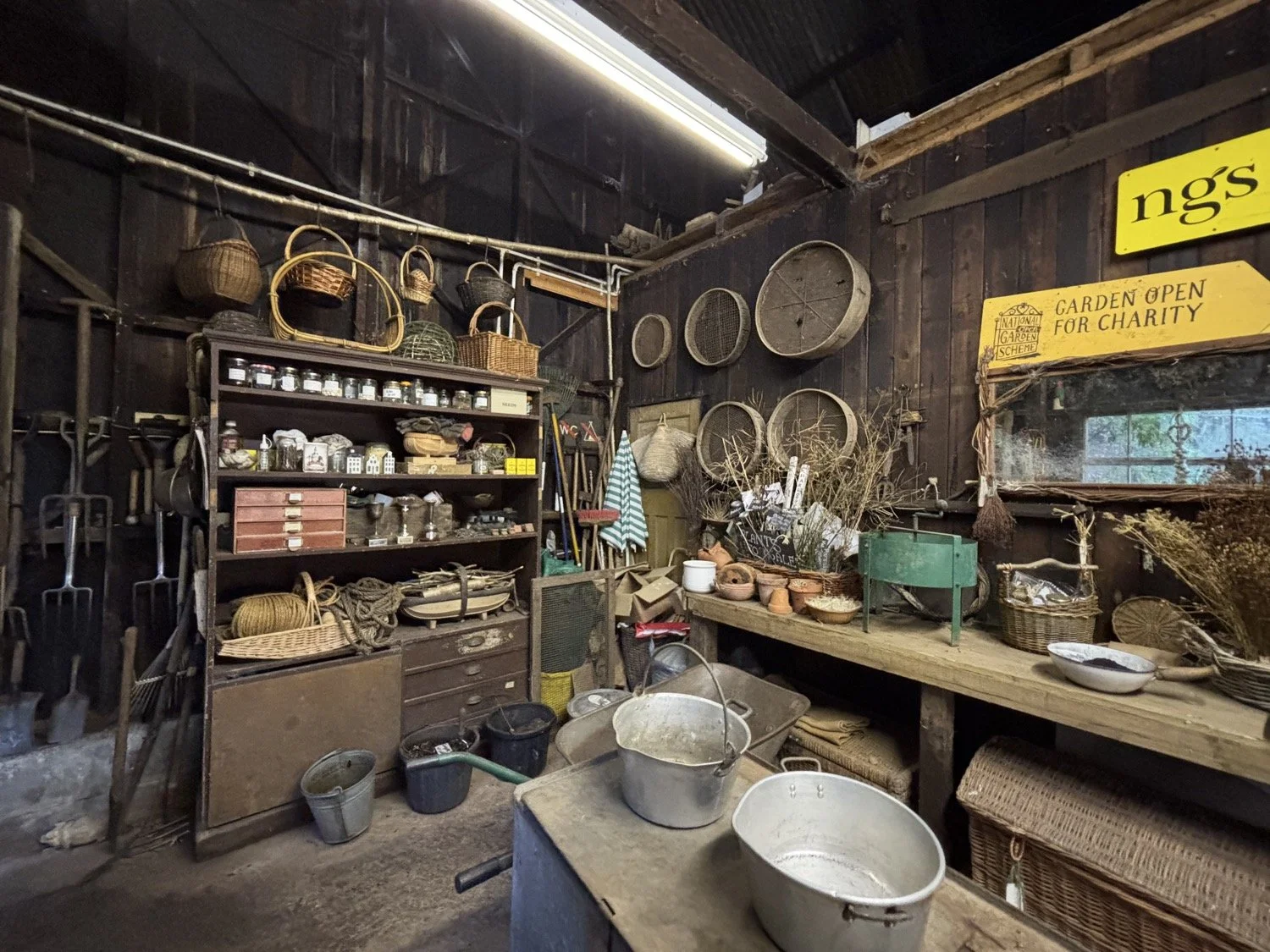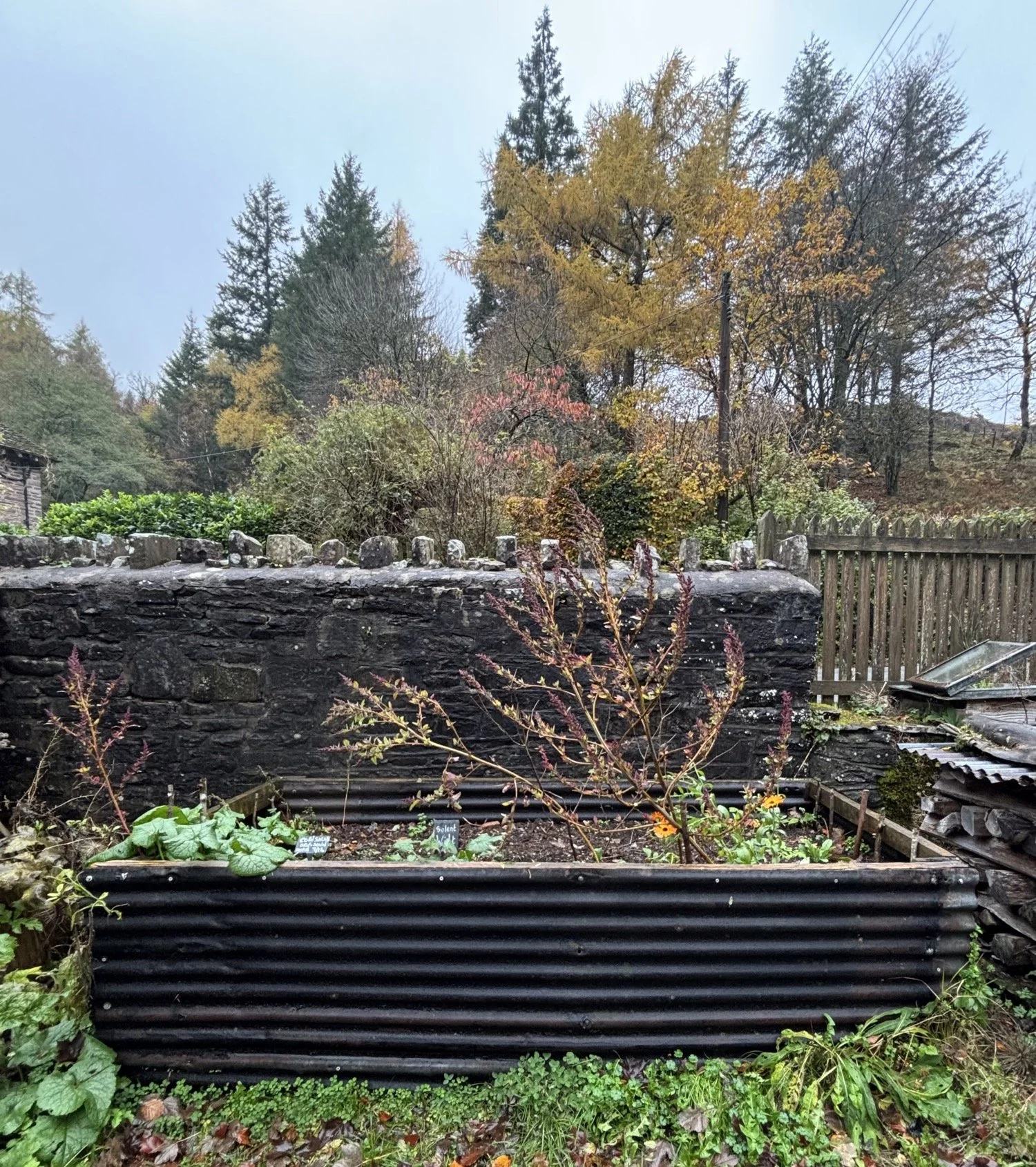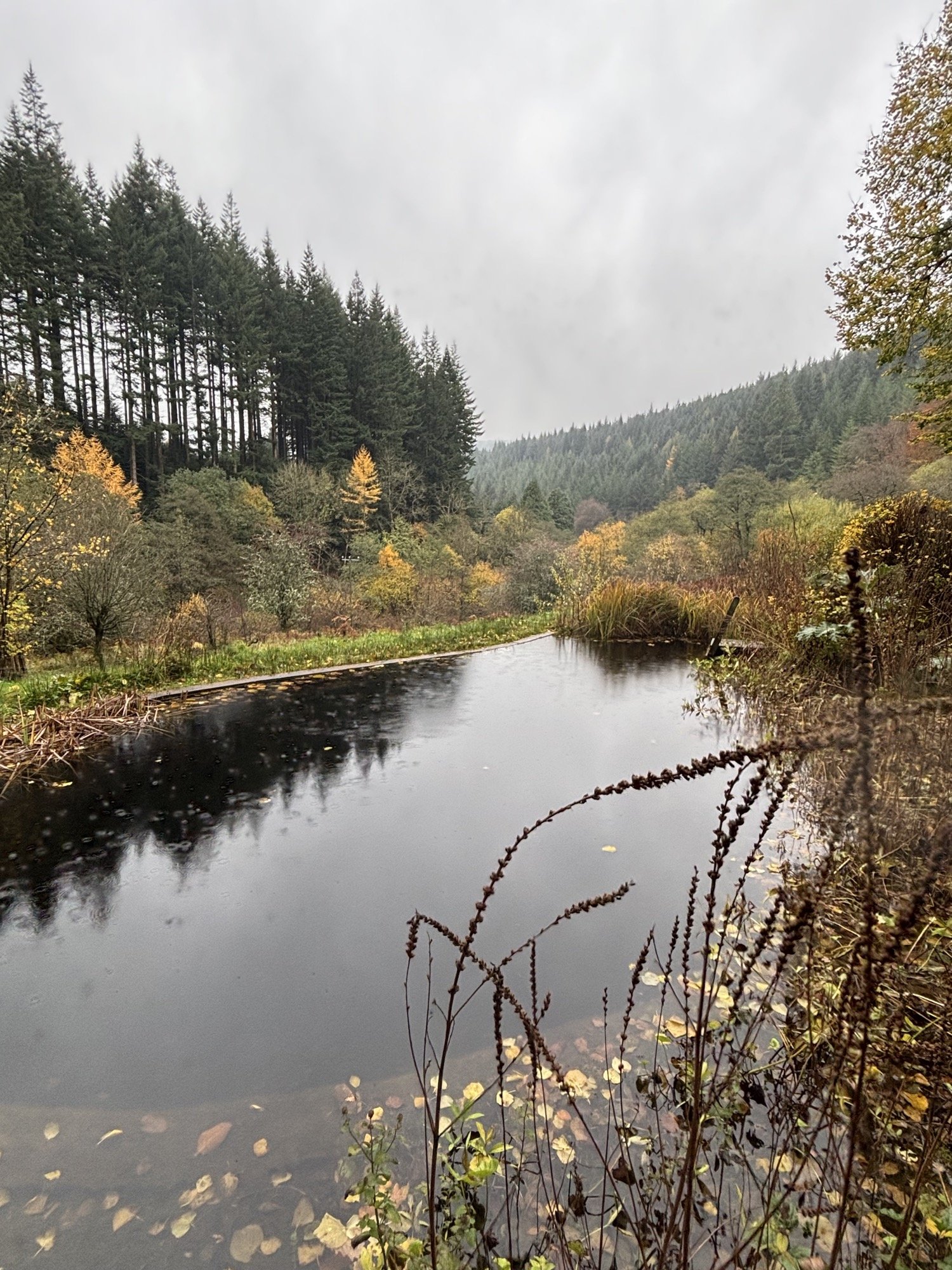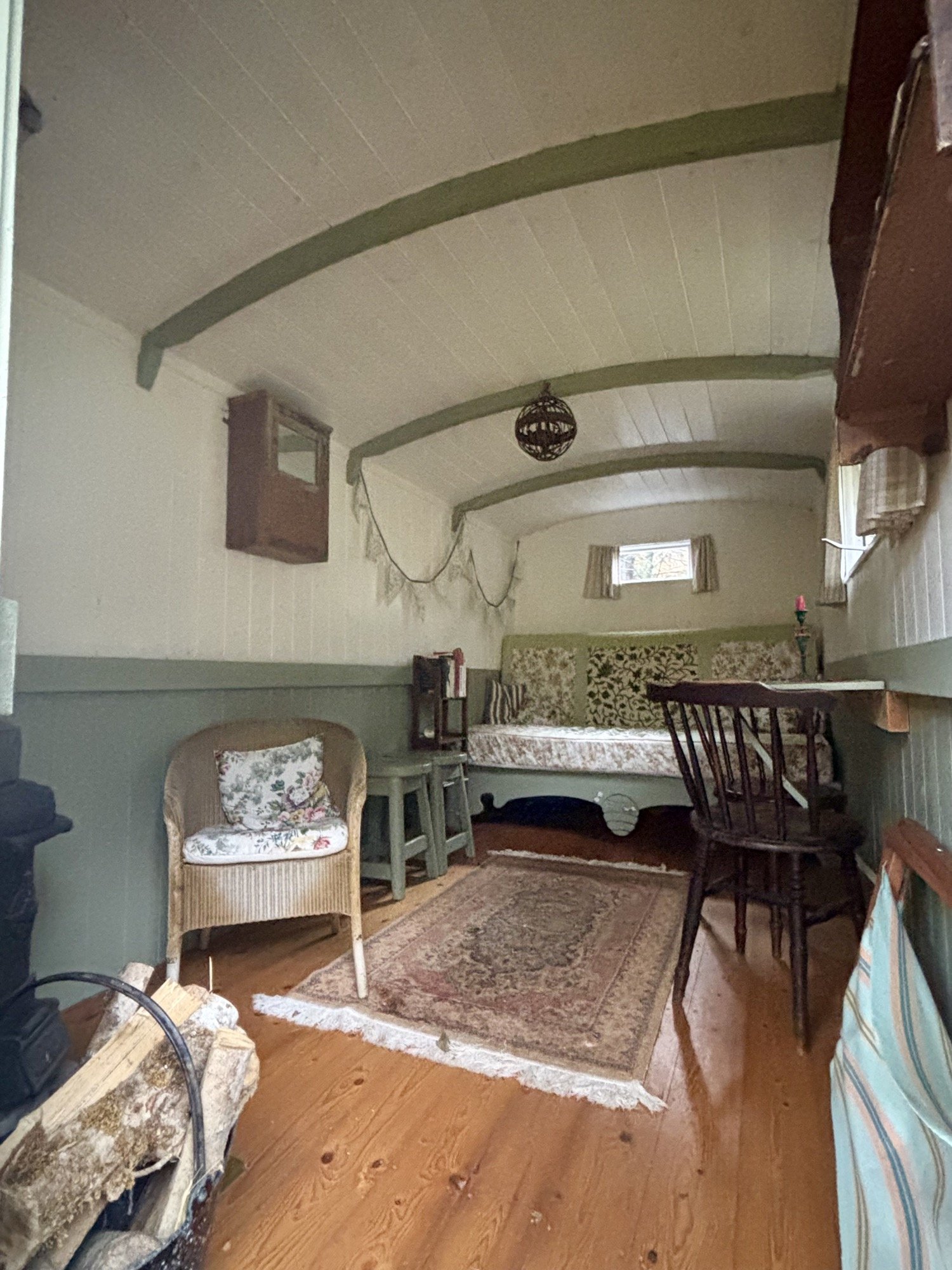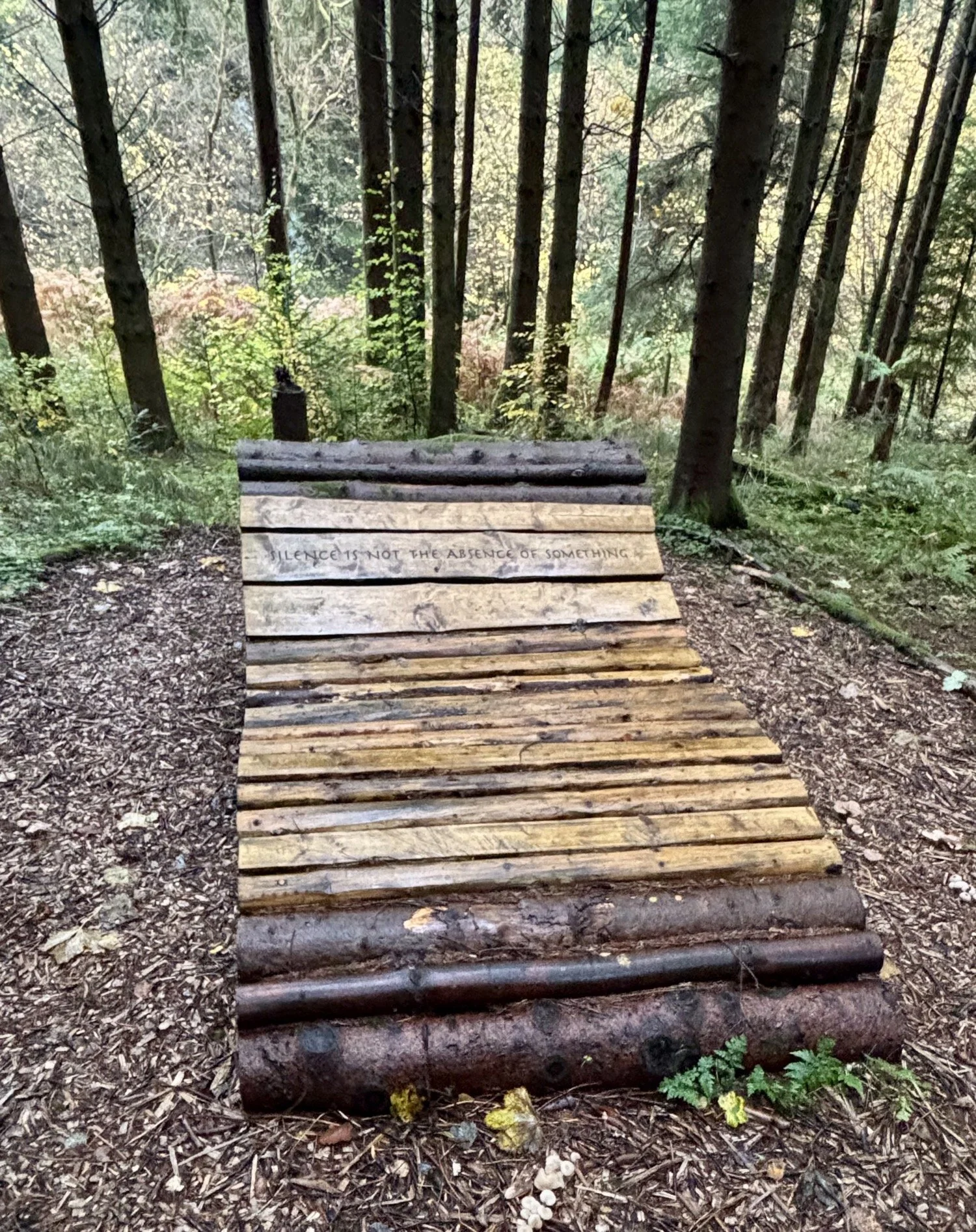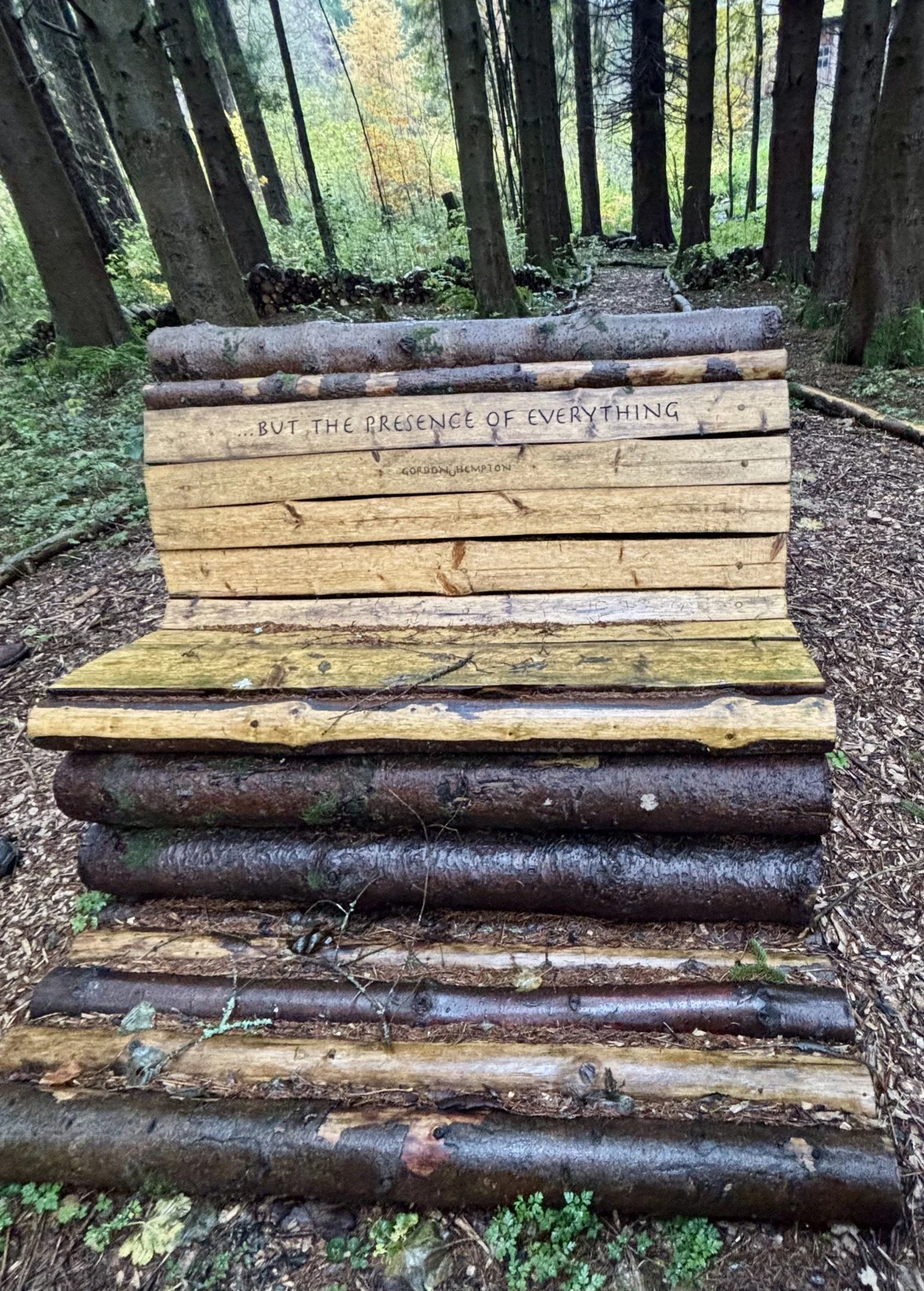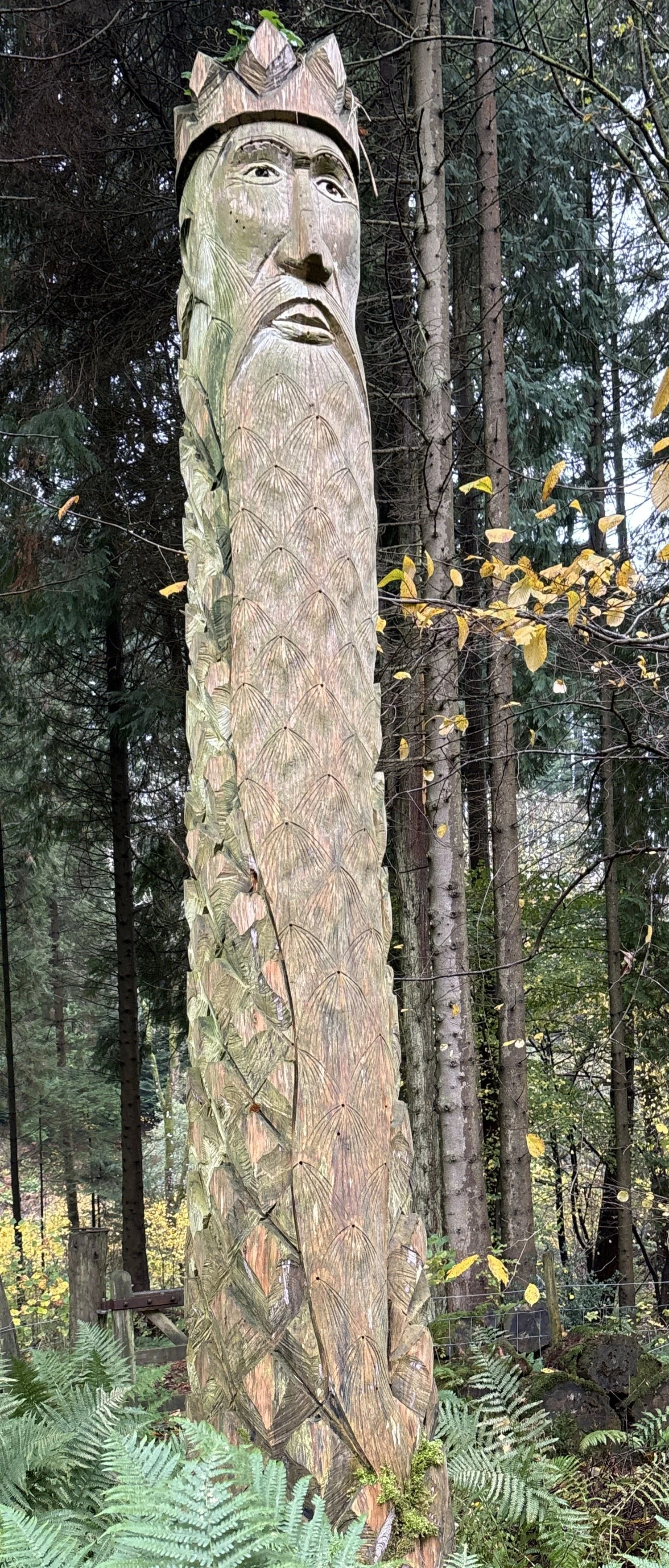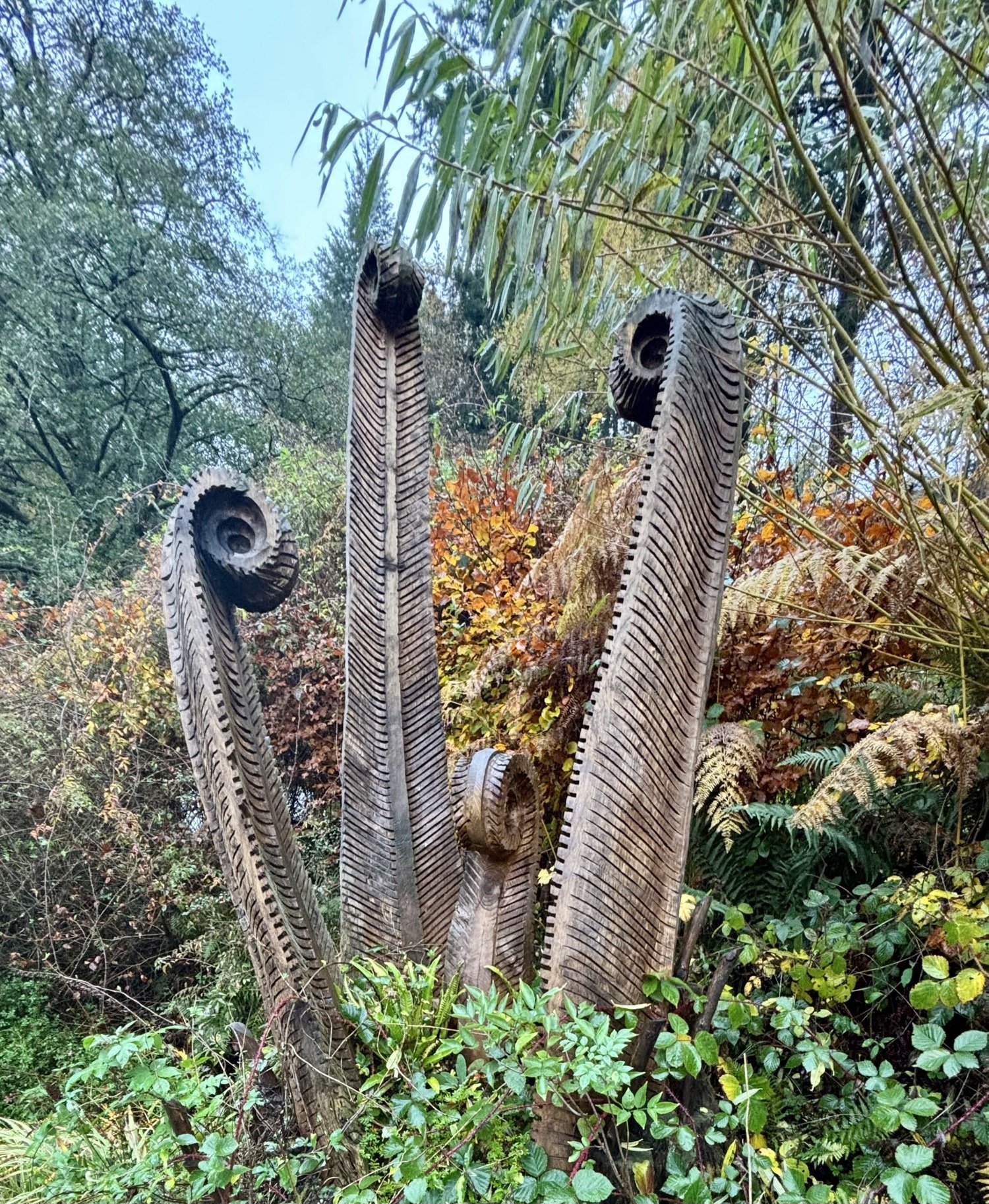The Restorative Garden
A misty November morning in the Welsh hills revealed a garden not about control but restoration — a place where nature is allowed to breathe, and where silence itself becomes part of the design.
Arrival in the Mist
Today I was lucky enough to be invited to visit Nant y Bedd garden near Abergavenny in South Wales. It’s a private garden, which opens to the public from June and to groups slightly earlier. As part of my guiding group, we were treated to an out-of-hours tour by the owner and Head Gardener, Sue, and her partner, Ian.
Last weekend I was in Sussex, visiting various gardens in search of autumn colour. I wasn’t disappointed: there were gorgeous trees providing a magnificent display, and herbaceous plants and shrubs still in flower. In many ways it felt like an extension of summer.
Back home on the Welsh borders, however, we are very much in autumn proper. The day did not promise well — grey, raining and overcast — but the rain never amounted to much, and the mist in the valley and soft grey air just added to the atmosphere.
Working with Nature
We began with a short talk on Sue’s philosophy of gardening: organic, sustainable and working with nature. I was somewhat horrified that she’s happy to have ground elder in the garden — but she just told me to eat it! I definitely felt the need to come back for a foraging course, and we hadn’t even left the old garage (now a very comfortable room filled with enormous houseplants).
When you visit a garden, owners rarely take you to their compost heaps first — but these were clearly Sue’s pride and joy. She told us how she makes her compost and how she doesn’t need to buy any in. We were all intrigued by the fleeces from their own small flock of sheep, used to keep the compost cosy and warm.
I (and others) had total potting-shed envy:
Sue then briefly explained Hügelkultur — planting on mounds of rotting wood. I love a raised bed, but I hadn’t heard of this before. Although I’ve certainly put old torn-up cardboard in the bottom of my own raised beds — does that count?
A Garden That Breathes
We crossed a stream on a bridge which was either enormous fun or mildly scary, depending on your viewpoint, and wandered through the trees to the swimming pool. Along the way Sue pointed out all the self-seeded trees that are simply allowed to grow. It’s a ten-acre garden, and there is plenty of space for nature to do its thing and for wildlife to be accommodated and encouraged.
But there is also a case for having the right plant in the right place. In my own considerably smaller garden I have some nearby sycamore trees which are always self-seeding. They particularly like to go right next to the house, where they’re most difficult to pull up. Of course, sycamores grow to be enormous, so I have to be vigilant and remove them as soon as I see them.
We arrived at a clearing — and there was Sue’s swimming pool.
I don’t think I’ve ever seen a pool in a more idyllic setting: it felt both cosy amongst the trees and yet offered a long-distance view at the same time. Sue said that she swims most days in the summer — and I can see why. Right next to it was a shepherd’s hut. More cosiness.
And that was when it occurred to me: this is a garden all about restoration. Not restoring nature — that simply needed to be allowed — but restoring ourselves. It got me thinking: what, in the end, is the point of gardening? Of spending hours doing what can often be back-breaking work — turning compost heaps, weeding, planting and cutting back. No one ever said gardening was easy (and if they do, they’re lying!).
Yes, it can give us the comfort of knowing we are eating the healthiest, organically-grown food possible. Yes, we gain enjoyment from sharing our space with nature and those small moments of delight — seeing the first frogspawn or glimpsing a kingfisher darting across the river. In Sue and Ian’s case they were lucky enough to witness salmon leaping just yesterday.
But ultimately, we garden (and spend time in gardens) because of the way they make us feel. Part of that is simply resting and enjoying the space, the landscape, the presence of nature.
The Silent Space
This all seemed to come to a fitting finale when we reached the Silent Space — which was anything but silent. Have a listen to this video.
Sue explained the Silent Space project. I’d come across “silent spaces” in several gardens recently — at Saltram, Hidcote and Wisley — but hadn’t realised it was part of a national movement. It began as an idea by Liz Ware in 2016, and every year more gardens join, finding somewhere to place a seat that encourages people to be silent, to put down their phones, perhaps close their eyes, and just… listen.
I came away inspired and had a look at the website — you might like to as well: https://silentspace.org.uk
The bench was two-sided: one side upright facing the river, the other encouraging you to lean back and look up into the trees. If I’d been on my own (and it hadn’t been so damp) I’d definitely have done that. It was a beautiful and simple creation by local woodsman Mick Petts.
The quotation carved into it — “Silence is not the absence of something … but the presence of everything” — comes from acoustic ecologist Gordon Hampton (https://soundtracker.com). Just pause for a minute and think about that. Take it with you next time you’re outside.
Mick Petts had produced two other sculptures in the garden and also runs courses (for the practically inclined) on using wood in the garden. Both pieces made use of western red cedar trees which had reached their next stage in the cycle of life.
Here’s Cedric — a totem-like figure looking out from the forest…
…. and the Hart’s-tongue ferns which I adored.
Actual ferns had been planted in the base.
A Place to Be Restored
Sadly our time in the garden had come to an end. I left feeling refreshed and uplifted. November isn’t traditionally the best time in any garden, yet here there were berries and seed heads for the birds, and winter kale for Sue and Ian. The treehouse, the shepherd’s hut, the Silent Space, the pool, the greenhouses and potting shed — so many places in which to be restored.
In our hectic twenty-first-century lives, that’s something to be cherished.
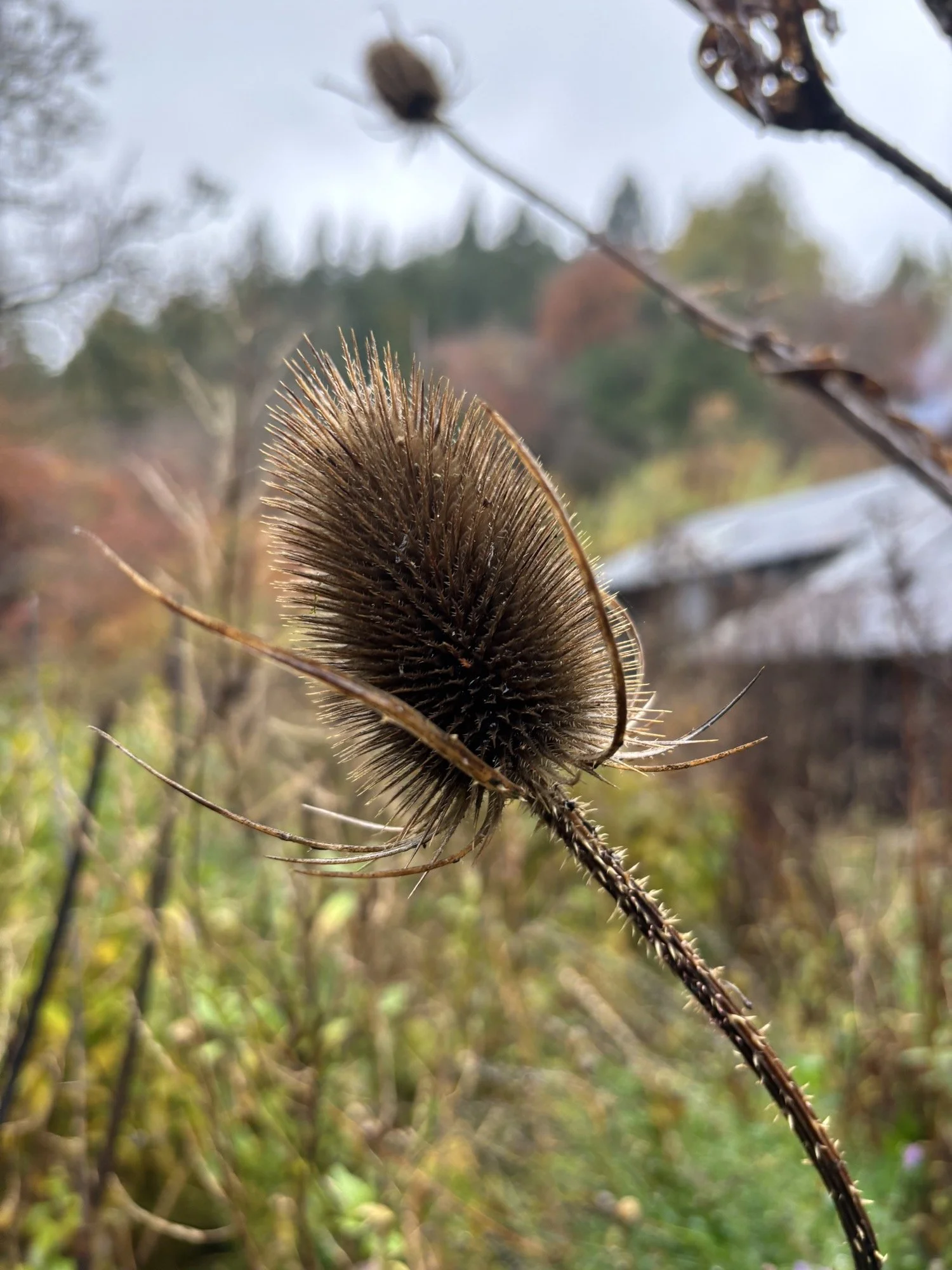

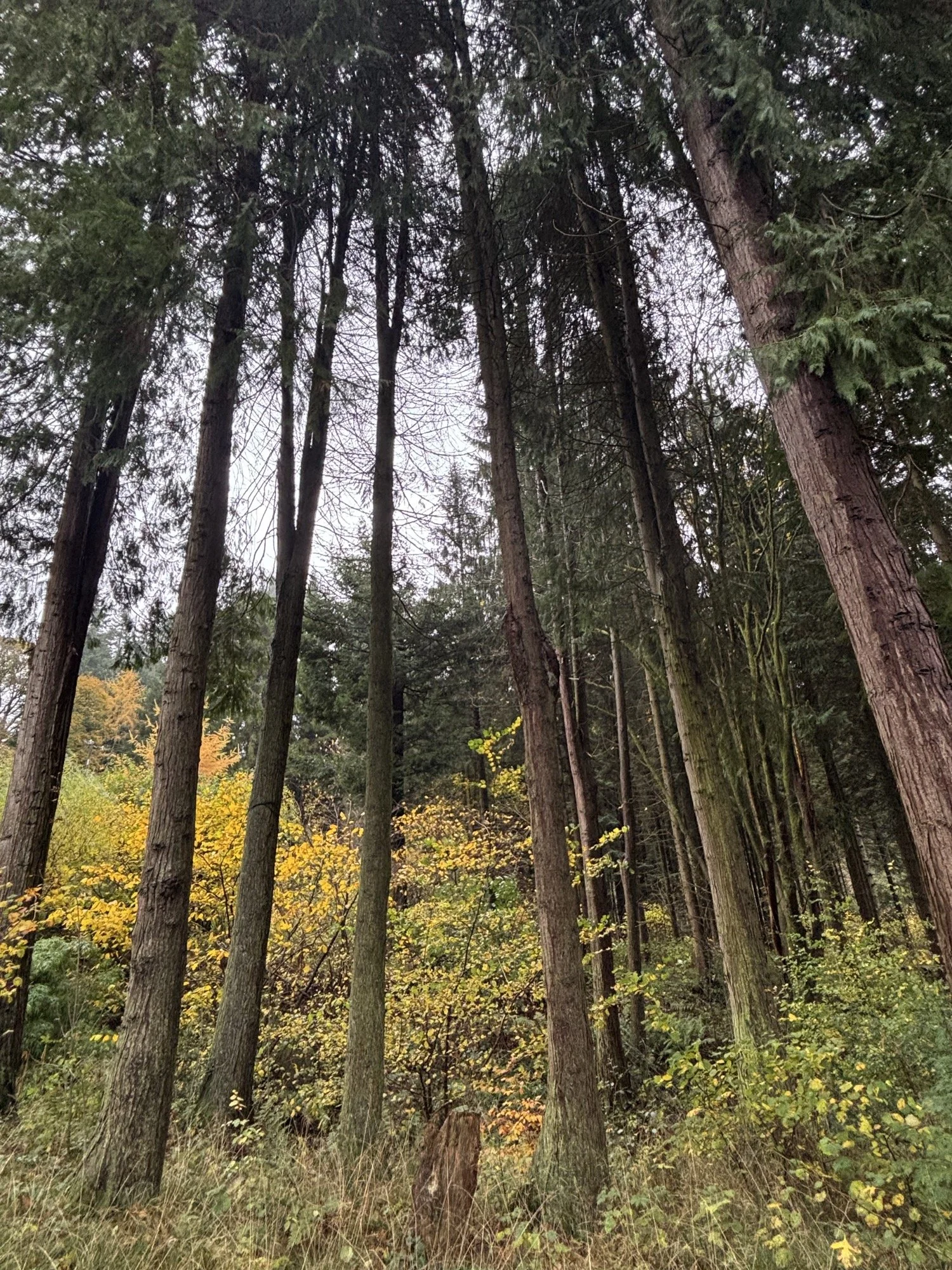
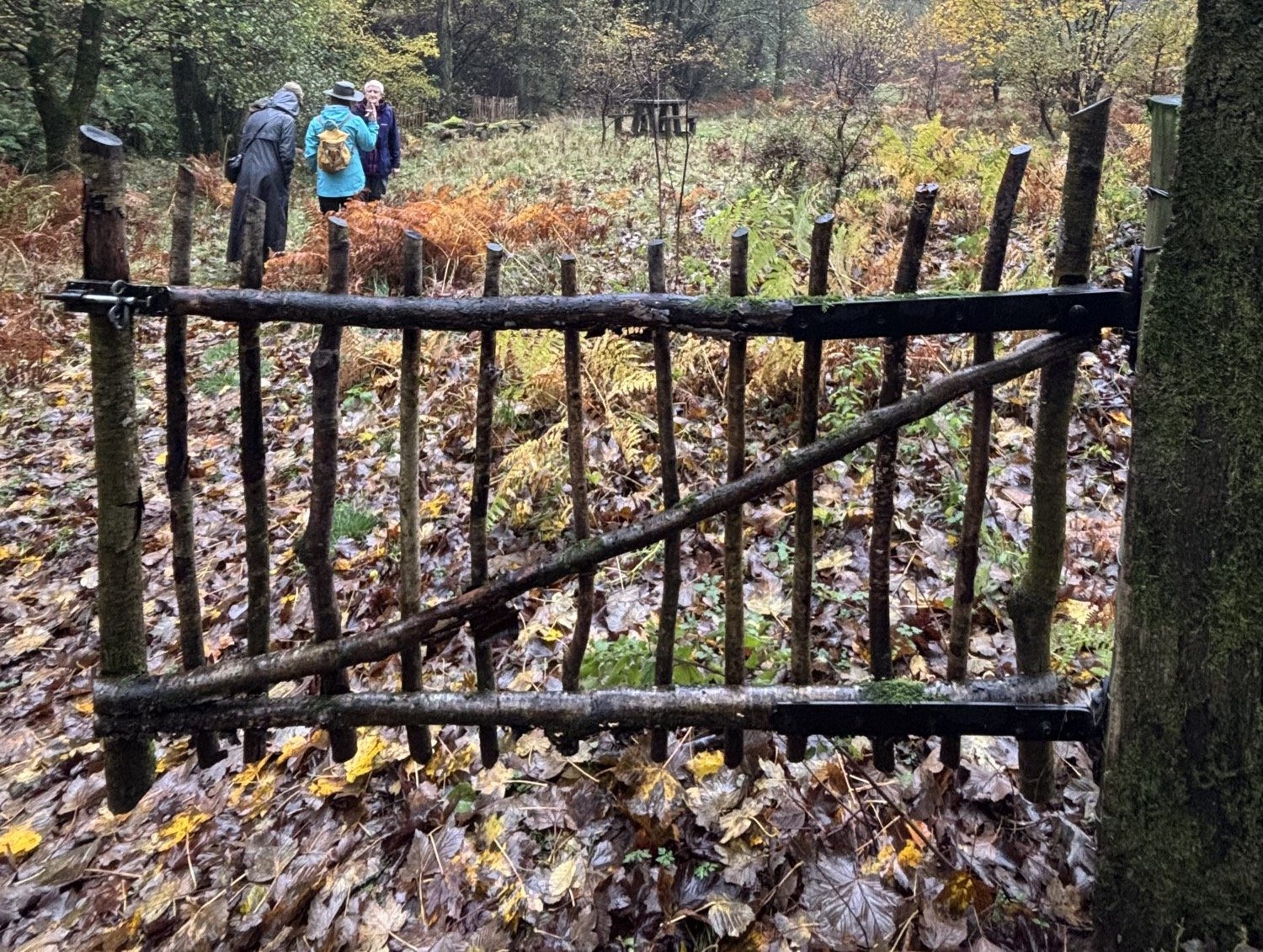

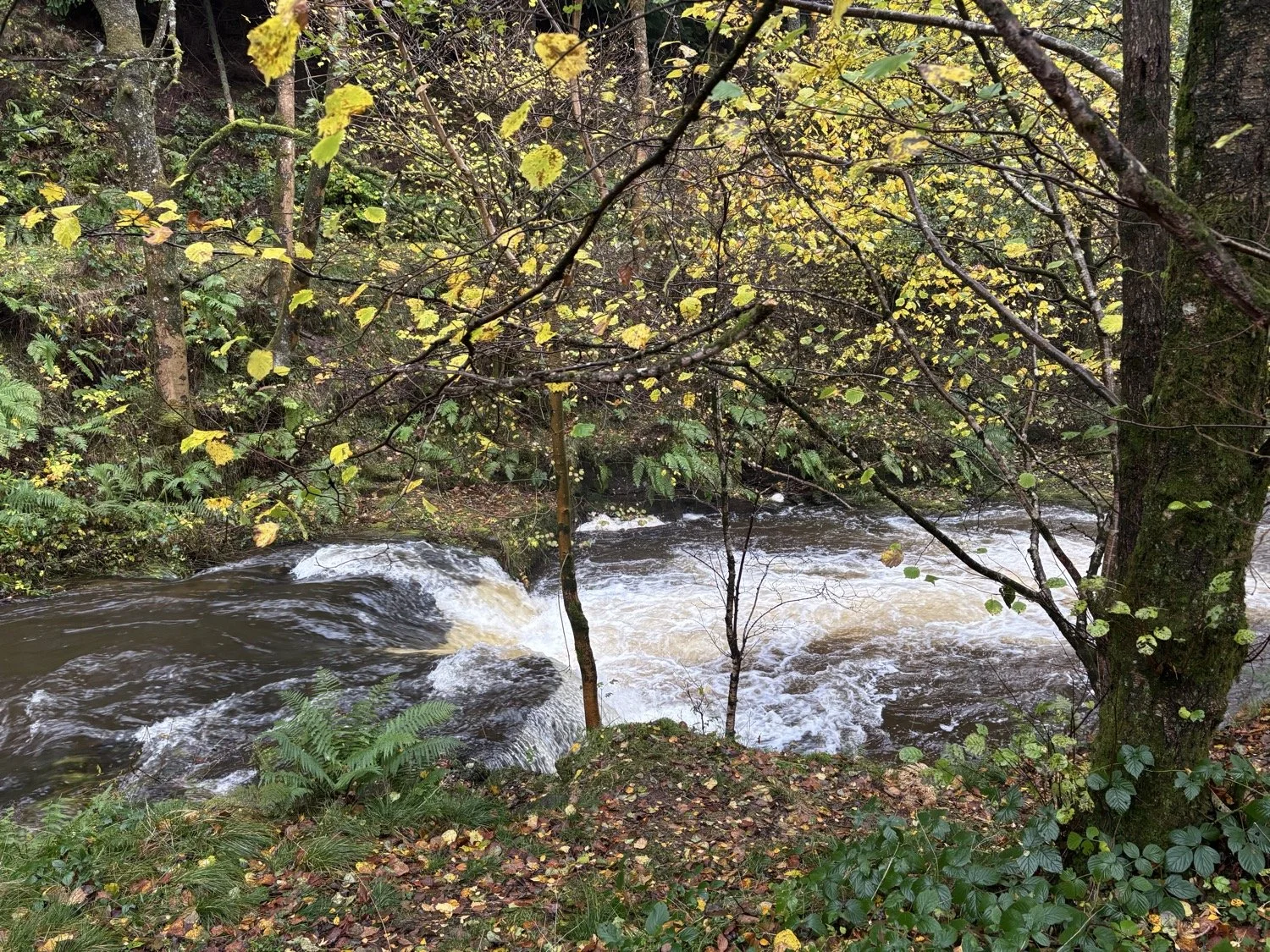

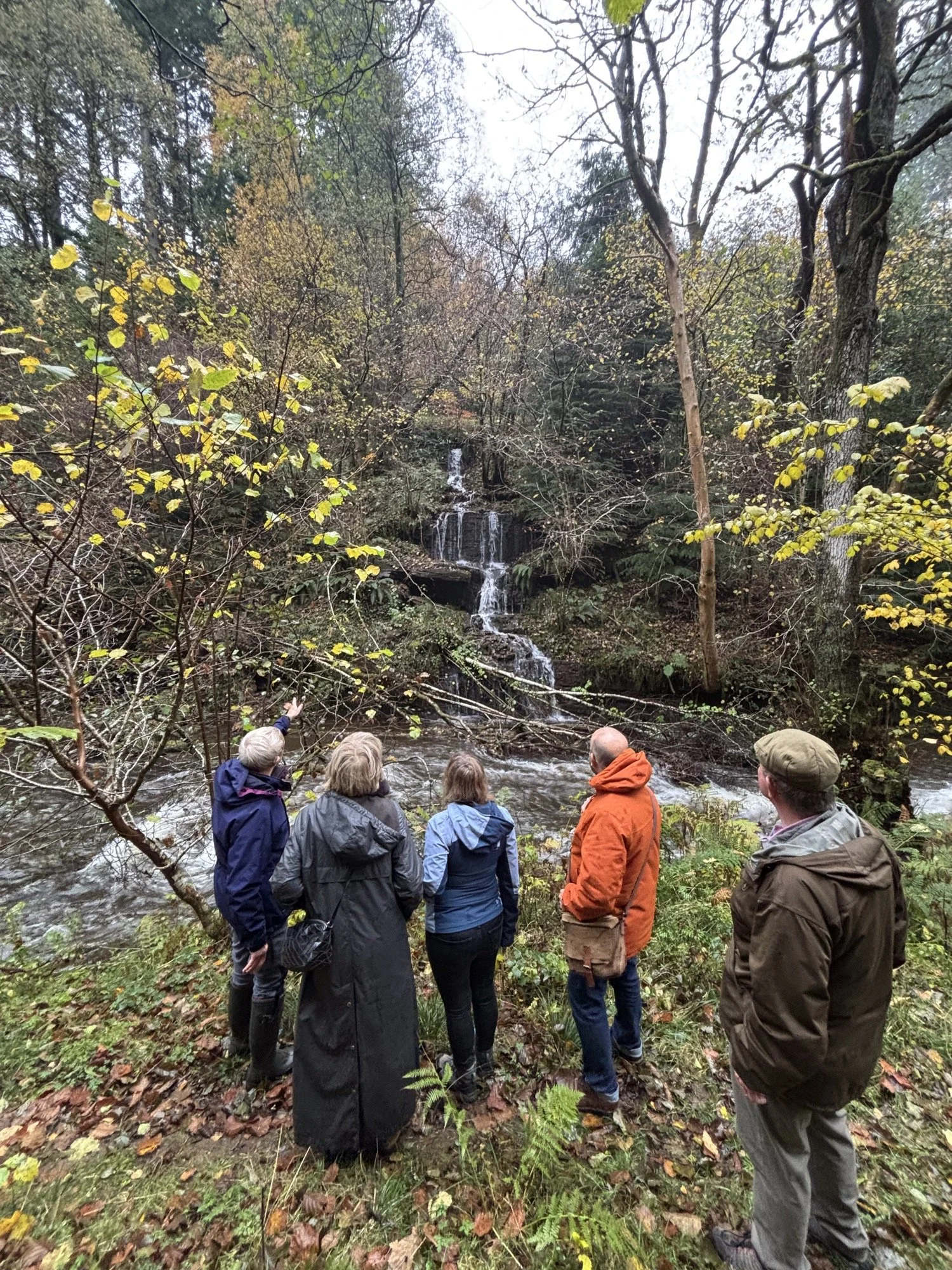



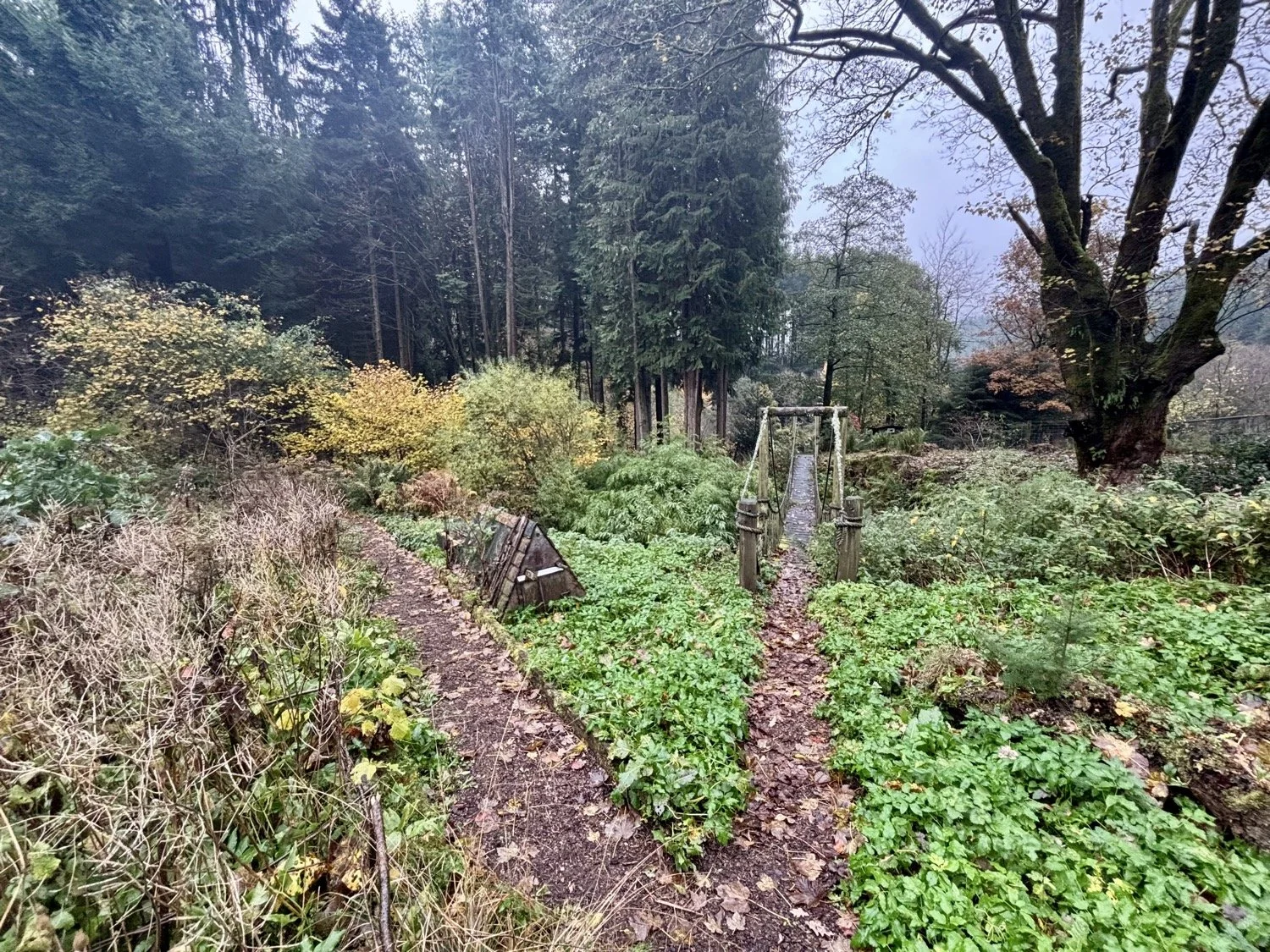
I highly recommend a visit to Nant y Bedd garden next summer. You must book in advance so do please go to their website for more information. And to see photos from other times of year. You can also read Sue’s blog about the garden. They feature in many prestigious books and won the highly coveted RHS Partner Garden of the Year in 2022. You can also sign up for the newsletter and follow them on instagram: @nantybeddgarden.
